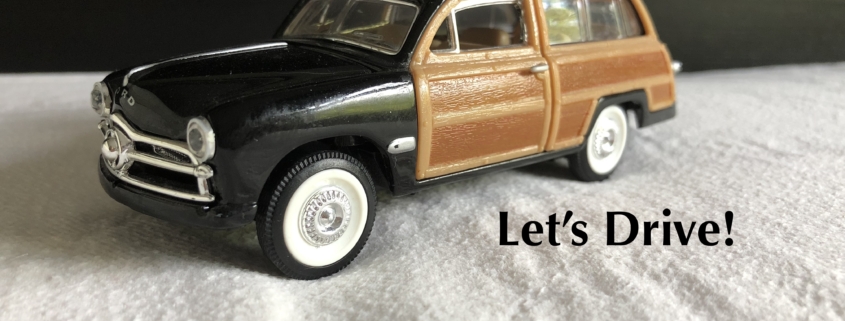Cultural Considerations in Health Care
Today, I repost this blog post from September 2019. Due to COVID-19 restriction, hospitals, and congregate-care facilities, and to some degree medical offices, often don’t allow anyone but the patient inside. Misunderstandings based on cultural differences have been a challenge before COVID-19 restrictions, but at least one had the option of bringing along a family member, friend, or other advocate. Today, this option is not available except in a few cases, and hence the chance for cultural misunderstandings may be increased.
Refreshing our awareness on this topic is possibly even more critical now. While a patient may not be permitted to bring someone along for support, there are other means of communication with care providers: phone, email, video conferences. It may be a bit more challenging and we, at NSPA know this well, however, it can be successful. Awareness and communication are key.
Let’s read our post now:
September of 2019, we went to a presentation on “Cultural Considerations at the End of Life” at the Northbrook Inn Memory Care Community in Northbrook. The fabulous speakers, Lauren Weldon (Partner at Margolis Weldon, LLC) and Jacqueline Boyd (Owner and Founder of The Care Plan), were presenting on common challenges patients from minority cultures, specifically ethnic and LGBTQ, experience in health care and in end-of-life.
It was an interesting and thought provoking presentation. Something that we as Patient Advocates come across on occasion; and in congruence with our personal and professional nature at NShore Patient Advocates, it is something we are always curious about and want to continue to learn more about – hence our attendance of the presentation. And it is something we all should be aware of!
So today, I will take the opportunity and share some of what I learned at the presentation, as well as some of our own observations and thoughts, in the hope to raise your awareness.
It all begins with “Culture”.
Culture

Culture is a “way of life” of groups of people – their shared behaviors, beliefs, values, attitudes, sexual orientations, goals, and many more other characteristics, that they accept, generally without thinking about them. And this “way of life” distinguishes them from other cultures to various degrees. It is fair to say, that culture also drives how people approach health care and even end-of-life.
We are all aware of the fact, that our country is made up of great cultural diversity with complex perspectives and beliefs as to every aspect of life. But curiously and unfortunately, this cultural diversity is not met adequately in the health care and care sphere.
The challenge that is presented with culture in our health care and care sphere is, in Jacqueline’s words, that we are a “minority – majority culture”, in which cultural considerations are poorly understood. Our health care and care industry is based on education, standards and protocols geared towards the majority culture. These do not teach and promote providers with the necessary cultural competencies and readiness to take into consideration their minority patients’ cultural, spiritual, ethnical, or other culture specific values when interacting with them.
I want to emphasize, this is not a willful choice, and some care providers already have this awareness to some degree or another. But overall, the cultural competencies needed in our multicultural cultural health care sphere is not in place, our should I say, in our awareness, yet. Where does that leave the minority?
It leaves the minority behind, not heard, misunderstood, discriminated against, isolated, stressed out about seeking medical care; and unfortunately it leaves minorities all too often with a lack of adequate care, which can result in negative health implications for the care receiver. This is not what Health Care is intended to do! And it is not what our health care providers intend to do! But it is! For now!
Who are those minority cultures being referred to?
Minority Cultures
For one, it is patients from other ethnic backgrounds, whether they are foreign born and came to the USA at any age in their lives, or maybe they were born here, but were raised in a tight knit ethnic community adhering to their culture’s value systems, be it a small community, maybe just a few families; or large community, like an entire neighborhood (think China Town, etc).
It is people of color, and while American-born and raised, face challenges in the health care system due to socio-economic determinants. This is a larger and more complex issue, which we can’t address here in this blog post.
And then, and this is not as commonly considered, they are the LGBTQ community, and specifically the senior LGBTQ. While we have a decent awareness of the LGBTQ community in regards to younger people and their various health, social and legal challenges, we don’t really think of our seniors as being LGBTQ members.
A few times now, when bringing up this topic, I’ve heard the genuine surprise: “Oh! There are gay seniors?” This lack of awareness is not only found in the general population, but also in the health care and care sphere. It is not ill-willed, is just that – a lack of awareness. Something that can be changed.
Considerations
Ethnicity
With so many different ethnic cultures represented in our country, it is beyond the scope of this blog post to list all the various cultural differences that can give way to misunderstandings or challenges in the care of patients from different ethnic cultures. Also, as coherent as many cultures are within themselves, there are also subgroups of any cultures. I won’t be addressing any of those today. I will be focusing on the general commonalities in various cultures.
Here are just some common cultural differences, as mentioned by Lauren; as well as some of our own observations.
- Illness and pain are experienced and expressed differently in different cultures. In some cultures, for example Somalia, pain is stoically accepted as an acknowledgement that the body is doing what it is supposed to do; even in the face of severe pain. Yet in other cultures, even moderate pain is being openly expressed. Thus, the degree to which pain should be investigated and/or treated may differ.
- The interaction with a health care providers differs in various cultures. In some cultures people, people express respect for each other by not making direct eye contact. While a care recipient would find eye contact to be disrespectful, the care provider instead, might misinterpret this behavior as a sign of depression in his patient.
- Patients and health care providers may have different beliefs about the cause of and approach to disease. For example the Vietnamese Buddhists believe that life is pre-ordained and will accept their fate as it unfolds. Whereas in the USA, we are accustomed to meet any disease with all the modern health care tools we have available to us.
- The influence of family dynamics, particularly traditional gender roles are impact the patient’s decision making in their health care. For example in the Muslim culture, the oldest male in the household makes all decisions. Thus, a Muslim patient would have to discuss their health care options with their head of household first, and get their approval for all treatments.
- The perceptions of death, and who should be involved, is very important in end of life decisions. For example, in the Hindu faith it is preferable to die at home, surrounded by family. The soul is believed to go on, depending on one’s karma; in order to set the soul free, bodies are usually cremated within 24 hours.
- The types of treatment options recommended by health care providers can be quite critical. While in the US health care system allopathic approaches are the standard, many other cultures believe strongly in the use of traditional healing and may not be compliant with western approaches of health care.
Sexual Orientation
Here is what Jaqueline shared with us at the presentation, with the focus on the seniors of the LGBTQ community:
- Current seniors in LGTBQ community are 3-4 times less likely to have children, and thus they are more likely to aging alone.
- Their life expectancy is 12 years lower than that of seniors belonging to cultures that do not carry high stigma.
- 80% of LGTBQ seniors go back “into the closet” when they move into any senior care facility, due to discrimination or fear of discrimination.
- 41% of LGTBQ seniors over 50years of age have a disability due to HIV, which speeds up the aging process.
- Members of the LGBTQ community are 2.5 times more likely to suffer from mental health impairments and substance abuse. When they find no support in the health care system they turn to various substances as a coping mechanism.
- Often times they also die alone. Isolated, and denied of their authentic identity.
Finally
In order for health care providers to reduce these health disparities among patients, and in order to avoid culturally based miscommunications, it is critical to educate and empower our care providers to be culturally competent health care providers. This is no small feat in a world that is constantly and rapidly changing in all aspects of life: social, cultural, political, economic, technology, and health care. Yet,it will be very important and it will be a continual challenge for health care providers to stay, or at least try to stay on top of having an up-to-date comprehensive view of the different cultural backgrounds.
And over time, as minority patients may experience the change in health care providers’ cultural awareness and readiness, they will feel safe and understood, and will open up about their cultural specifics that guides their perspectives of their own care needs. That is the goal.
It is clear from the descriptions above, that the benefits of being a cultural competent health care providers are priceless. Having the knowledge or even “just” the awareness that different cultures have specific beliefs, values, attitudes and goals; and being curious and proactive in integrating this into their provider-patient interactions and health care approaches, will help guide care providers to better connect with their patients, provide better individualized care, and produce more successful medical outcomes.
And in Jacqueline’s words: “While we may never arrive there, we still have to drive there.” So let’s drive!
Resources and Further Reading
https://www.ncbi.nlm.nih.gov/pmc/articles/PMC1924990/
https://www.insider.com/lgbtq-healthcare-doctors-health-disparities-2018-4




